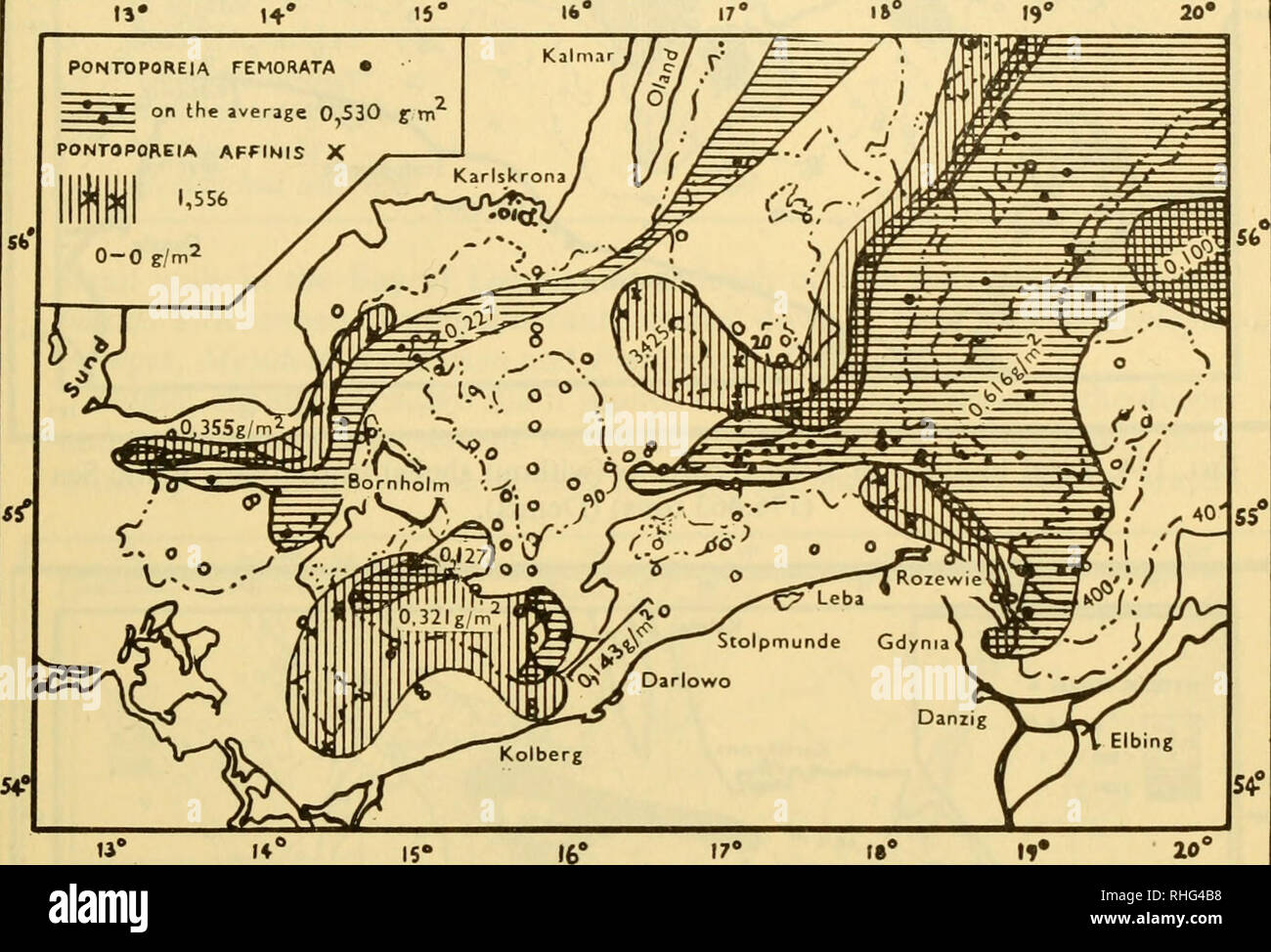. Biology of the seas of the U.S.S.R. Marine biology -- Soviet Union; Hydrology -- Soviet Union. THE BALTIC SEA 319 Astarte borealis extends through the Arcona depression and the Slypsk trough and farther to the east; the Bornholm depression is inhabited by Macome calcarea (Fig. 154). In the Slypsk trough Terebellides stromi appears in great masses, and Demel thinks it possible to distinguish in this area an Astarte-Terebellides biocoenosis. At lesser depths in the southern part of the Baltic Sea Mytilus edulis is numerically a markedly preponderant form (Fig. 155), accompanied by Cardium edul

Image details
Contributor:
Library Book Collection / Alamy Stock PhotoImage ID:
RHG4B8File size:
7.1 MB (415 KB Compressed download)Releases:
Model - no | Property - noDo I need a release?Dimensions:
1916 x 1304 px | 32.4 x 22.1 cm | 12.8 x 8.7 inches | 150dpiMore information:
This image is a public domain image, which means either that copyright has expired in the image or the copyright holder has waived their copyright. Alamy charges you a fee for access to the high resolution copy of the image.
This image could have imperfections as it’s either historical or reportage.
. Biology of the seas of the U.S.S.R. Marine biology -- Soviet Union; Hydrology -- Soviet Union. THE BALTIC SEA 319 Astarte borealis extends through the Arcona depression and the Slypsk trough and farther to the east; the Bornholm depression is inhabited by Macome calcarea (Fig. 154). In the Slypsk trough Terebellides stromi appears in great masses, and Demel thinks it possible to distinguish in this area an Astarte-Terebellides biocoenosis. At lesser depths in the southern part of the Baltic Sea Mytilus edulis is numerically a markedly preponderant form (Fig. 155), accompanied by Cardium edule, My a arenaria, Macoma baltica and others.. PONTOPOREIA FEMORATA * ж. â on the a' Fig. 153. Total biomass of Pontoporeia femorata (20, 460 tons) and of Pontoporeia affinis (29, 533 tons) (Demel). The mass forms of the fauna at times provide a great density of population as regards number of specimens {Table 128). In comparison with the middle and northern parts of the Baltic Sea, the large number of Mytilus, Astarte and Macoma calcarea is conspicuous. K. Demel and Z. Mulicki (1954) have also drawn a chart of the distribution of the benthos biomass in the southern part of the Baltic Sea (Fig. 156) and its contents by separate components {Table 129). Thus 90 per cent of the total biomass of bottom fauna consists of bivalves. Some visual outlines of the distribution of bottom fauna are also given by Demel and Mulicki; the meridional cross section through the Bornholm depression is given in Fig. 157. The same picture, as for all the southern part of the Sea, is repeated on a. Please note that these images are extracted from scanned page images that may have been digitally enhanced for readability - coloration and appearance of these illustrations may not perfectly resemble the original work.. Zenkevich, L. A. (Lev Aleksandrovich), 1889-1970. New York, Interscience Publishers